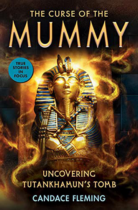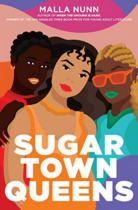
Award-winning science poetry master Leslie Bulion presents a lyrical salute to Africa’s Serengeti Plain, one of the most spectacular and productive ecosystems on Earth.
Materials from Africa

Award-winning science poetry master Leslie Bulion presents a lyrical salute to Africa’s Serengeti Plain, one of the most spectacular and productive ecosystems on Earth.

Olu lives in Lagos, Nigeria; his cousin, Greta, lives in Milan, Italy. Though their lives may be different, their ways of living and playing are quite similar. They both roller skate; they both skip down the street; they both play with toy trains, trucks, and boats… and they both dream of meeting and being together

It’s a special day in Macy’s classroom as all the children come in dressed up in their most stylish African clothing! Zahra’s Ethiopian dress is covered in beads, while Malika’s Namibian outfit is bursting with colours. And who is hiding behind that elephant mask from Cameroon? No two outfits are the same, in this beautiful and varied parade of clothing from across Africa!

Atinuke’s first non-fiction title is a major publishing event: a celebration of all 55 countries on the African continent! Her beautifully-written text captures Africa’s unique mix of the modern and the traditional, as she explores its geography, its peoples, its animals, its history, its resources and its cultural diversity.

In a trio of droll stories, award-winning author and storyteller Atinuke debuts an endearing and enduring character with plenty to prove. Tola lives in an apartment in the busy city of Lagos, Nigeria, with her sister, Moji, who is very clever; her brother, Dapo, who is very fast; and Grandmommy, who is very bossy. Tola may be small, but she’s strong enough to carry a basket brimming with groceries home from the market, and she’s clever enough to count out Grandmommy’s change. When the faucets in the apartment break, it’s Tola who brings water from the well. And when Mr. Abdul, the tailor, has an accident and needs help taking his customers’ measurements, only Tola can save the day.

Before he was the first Black president of South Africa, Nelson Mandela (1918–2013) was a boy with a traditional Thembu upbringing. He went on to study law and become involved with African nationalist politics. The government had established an apartheid (a system of segregation that privileged white people), and Mandela worked to overthrow this system. He was arrested, accused of treason, and thrown in jail. When he was released, Mandela negotiated an end to the apartheid and was elected president. Though he was a controversial figure at the time, he is now seen as an iconic advocate for democracy and social justice. Inspiring and informational, Nelson Mandela tells the story of one of the greatest politicians and revolutionaries. It includes a timeline, glossary, and index.

During the reign of the New Kingdom of Egypt, the boy pharaoh Tutankhamun ruled and died tragically young. In order to send him on his way into the afterlife, his tomb was filled with every treasure he would need after death. And then, it was lost to time, buried in the sands of the Valley of the Kings.
His tomb was also said to be cursed.
Centuries later, as Egypt-mania gripped Europe, two Brits — a rich earl with a habit for gambling and a disreputable, determined archeologist — worked for years to rediscover and open Tutankhamun’s tomb. But once it was uncovered, would ancient powers take their revenge for disturbing and even looting the pharaoh’s resting place? What else could explain the mysterious illnesses, accidents, and deaths that began once it was found?

When Amandla wakes up on her fifteenth birthday, she knows it’s going to be one of her mother’s difficult days. Her mother has had another vision. This one involves Amandla wearing a bedsheet loosely stitched as a dress. An outfit, her mother says, is certain to bring Amandla’s father back home, as if he were the prince and this was the fairytale ending their family was destined for. But in truth, Amandla’s father has long been gone–since before Amandla was born–and even her mother’s memory of him is hazy. In fact, many of her mother’s memories from before Amandla was born are hazy. It’s just one of the many reasons people in Sugar Town give them strange looks–that and the fact her mother is white and Amandla is Black.
When Amandla finds a mysterious address in the bottom of her mother’s handbag along with a large amount of cash, she decides it’s finally time to get answers about her mother’s life. What she discovers will change the shape and size of her family forever. But with her best friends at her side, Amandla is ready to take on family secrets and the devil himself. These Sugar Town queens are ready to take over the world to expose the hard truths of their lives.

When Joseph and Mama lived in a refugee camp in East Africa, everyone cooked and ate together. And Joseph could always hear someone playing the awal. It’s much too quiet and lonely in his new home. Though Whoosh, the girl who lives upstairs, is friendly, Joseph misses having more people around, especially his grandmother, who still lives across the ocean. So he invites his relatives in the city to come for dinner, then he invites his teacher, then Whoosh and her mami — but everyone is too busy.

Gloria is making a delicious porridge, but she’s too hungry to share it with the cat. When Gloria goes to fetch some water, cat eats all the porridge . Angry Gloria shakes her spoon at the cat, and the scared cat runs away, starting a chaos around her. A retelling of an Ethiopian folktale by acclaimed author, Elizabeth Laird.